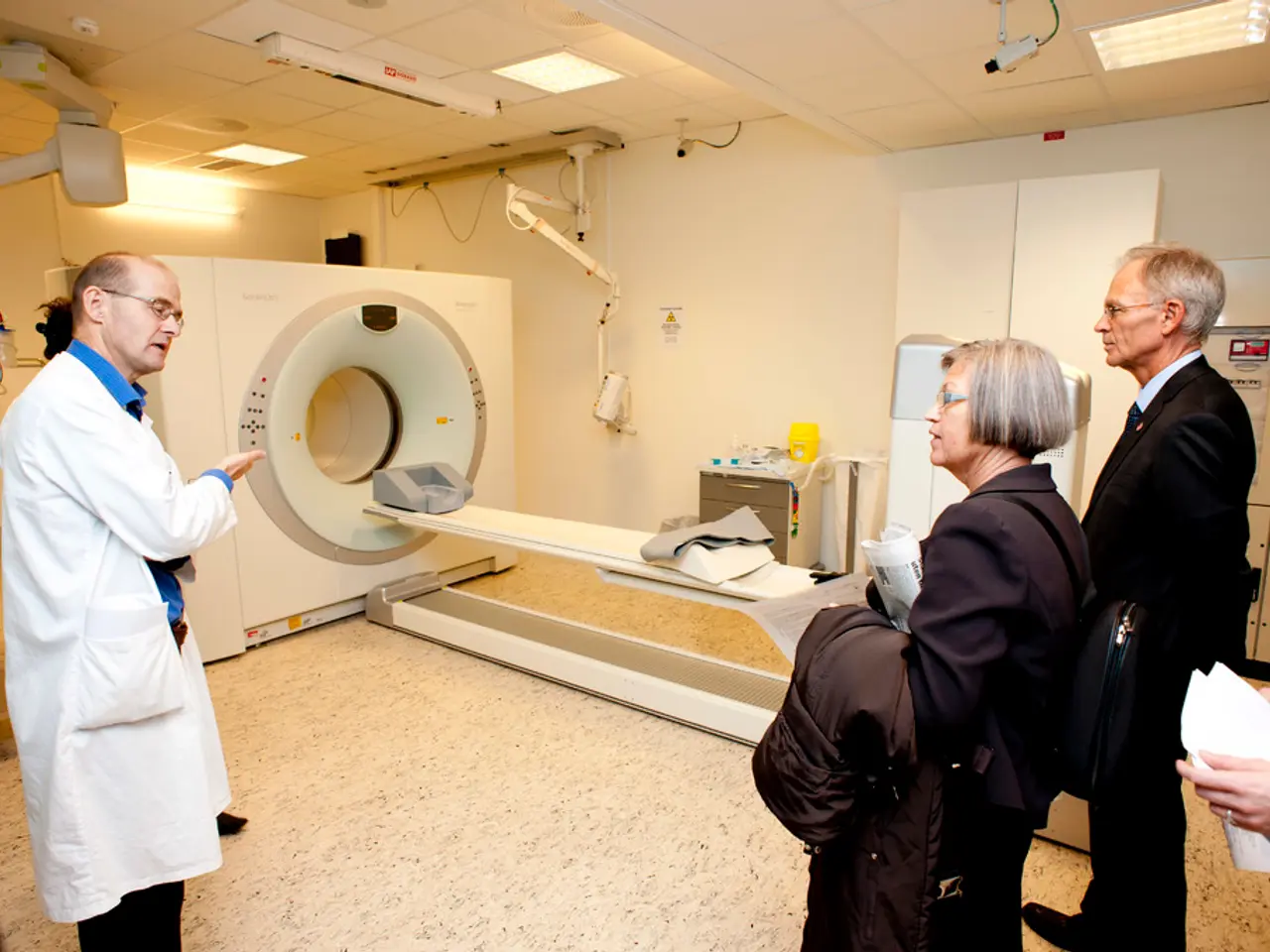Medical Imaging Undergoes Revolution: The Role of Applications in Its Transformation
In the rapidly evolving world of healthcare, mobile applications are playing a pivotal role in revolutionizing the field of radiology.
One such application is ASTRA Mobile, enabling users to receive, view, download, print, and share their medical reports and encrypted DICOM images with anyone across the globe. This global accessibility is transforming the way radiology data is managed and shared.
Mobile apps in Radiology are not limited to DICOM images alone. They use a common database for both DICOM and non-DICOM images, usually on Cloud, making it easier for radiologists to gather, edit, analyze, and share digital images anywhere and anytime.
The convergence of Big Data, Artificial Intelligence (AI), and Internet of Things (IoT) is significantly contributing to the digitization of Radiology. Big Data is simplifying and optimizing processes, delivering exceptional experiences to patients, and encouraging the development of mobile apps for Radiology organizations. AI is transforming healthcare by automating repetitive tasks, making customized and intelligent decisions, improving workflow efficiencies, and delivering informative diagnostic content. IoT, integrated with Machine learning and Cloud technology, is optimizing workflow, predicting possible failures, and enabling a 360-degree view of the current status of standalone X-ray, Ultrasound, and CT machines.
Mobile health applications have revolutionized the radiology market in recent years. Portable and point-of-care ultrasound (POCUS) systems offer mobility and real-time diagnostics, while software solutions like Siemens Healthineers' Naeotom Alpha CT system and new interfaces connecting scheduling platforms with radiology practice management software enhance workflow and remote diagnostics.
Mobile apps also help protect Private Health Information (PHI) by providing instant access to medical data while ensuring its deletion after a specified time. For instance, when a radiologist requests a medical image through a mobile app, a copy of the data is sent to the user's device, which is erased after 48 hours.
Notable examples of AI in Radiology include HeadXNet, specifically in the context of brain imaging and diagnosis, and SnapView, an iOS application that captures non-DICOM images in departments like ED, Wound care, Dermatology, and Ophthalmology.
Monster Anatomy Lite-Knee is an interactive lower limb radiology atlas app that provides detailed information about the knee via images for healthcare professionals and medical students. Meanwhile, MobileRad is a HIPAA-approved application integrated with NovaPACS® system to display data on third-party devices, offering features like viewing, analyzing, editing, distributing, and archiving digital medical images.
Carestream's Vue Motion is another popular application in Radiology, allowing users to access images across multiple platforms, enhancing image viewing and decision-making in medical processes. iClarity Lite is a medical image viewing app that allows users to receive and view images stored on clarity PACS, offering features like search and sorting, scrolling images in multislice series, and 'shake the device' for image reset.
Lastly, Mobile MIM is a FDA-approved diagnostic radiology app that offers features like real-time viewing, fusion, registration, and exhibit of digital medical images from various modalities.
As the healthcare industry continues to evolve, consulting with mHealth experts remains crucial to understanding and utilising these mobile applications effectively in the field of Radiology. The future of radiology is undoubtedly mobile, and these advancements are set to redefine the way we approach and interpret medical imaging.
Read also:
- Peptide YY (PYY): Exploring its Role in Appetite Suppression, Intestinal Health, and Cognitive Links
- Toddler Health: Rotavirus Signs, Origins, and Potential Complications
- Digestive issues and heart discomfort: Root causes and associated health conditions
- House Infernos: Deadly Hazards Surpassing the Flames








